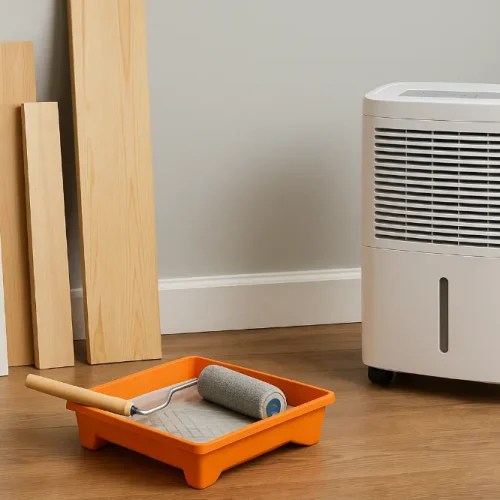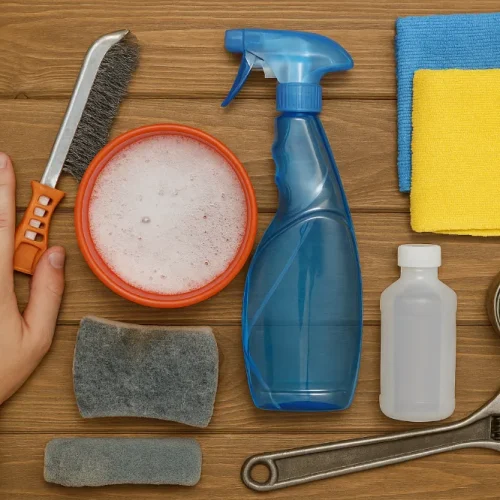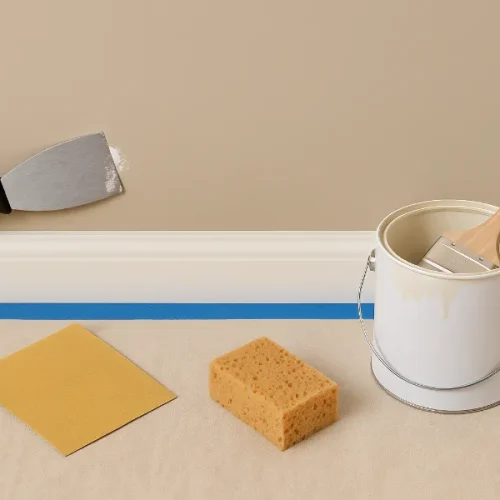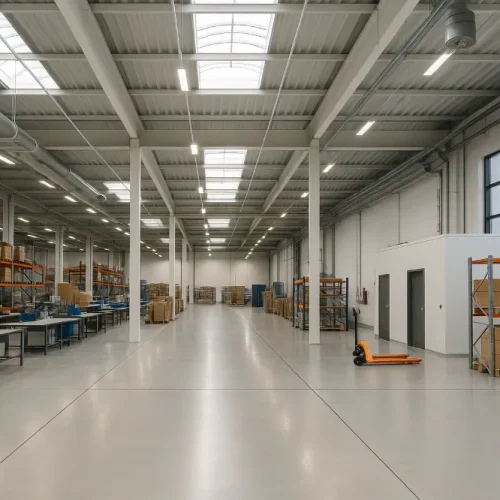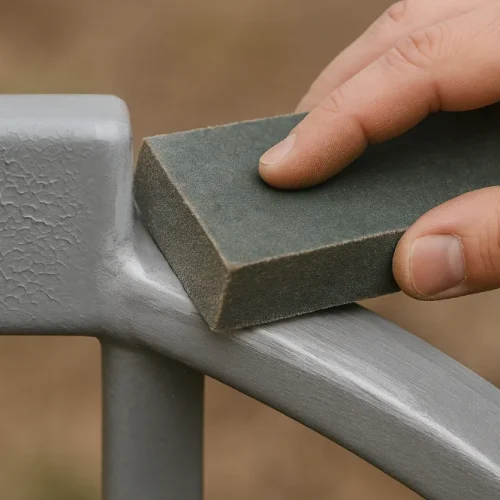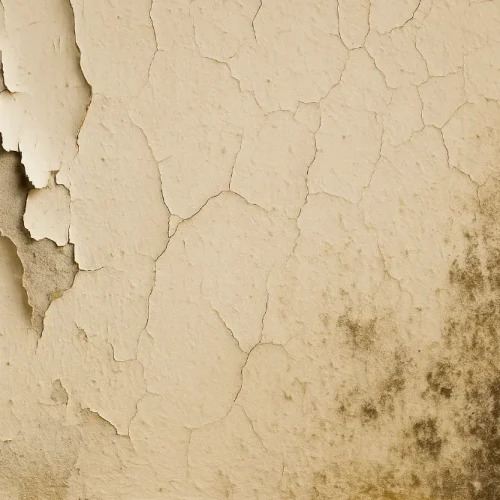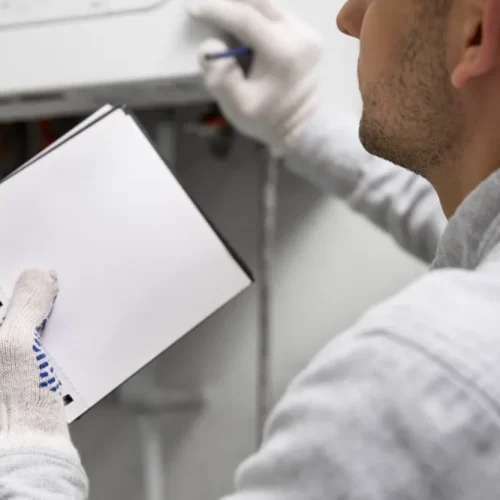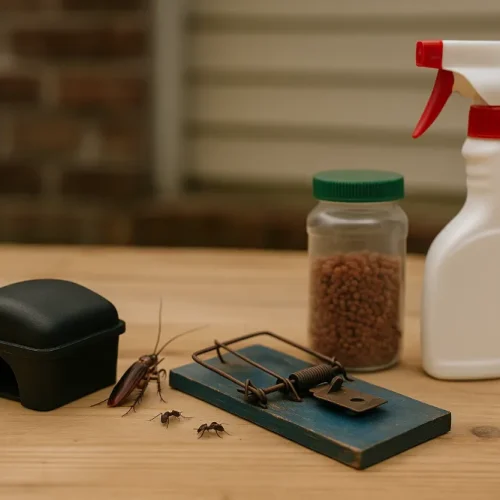
If you’ve ever walked into your garage, looked around at the clutter, and thought, “You know what? I’m finally going to fix this disaster today,” then welcome to the wonderful, chaotic world of garage DIY. It usually begins with good intentions, a free weekend, and a couple of overly confident YouTube videos that make you believe you can build or fix absolutely anything. I’ve been there—energized, optimistic, and ready to transform the garage into a bright, organized paradise. But the garage has a funny way of humbling you quickly. It exposes every skipped step, every mismeasurement, every tool you thought was good enough, and every time you let enthusiasm overpower common sense.
The truth is, garage DIY projects are notorious for catching beginners off guard. The space is rarely ideal poor lighting, uneven floors, fluctuating temperatures, piles of stored junk, and tools that may or may not have been passed down from three generations ago. Add in lack of planning and a dash of overconfidence, and mistakes become almost guaranteed. So let’s walk through the most common beginner mistakes in garage DIY projects, told from the perspective of someone who has personally lived through all of them. Along the way, I’ll also reference a couple of reliable sources, including the U.S. Environmental Protection Agency’s guidelines on indoor air quality because the garage environment isn’t just inconvenient, it can affect how materials behave. And we’ll even dip into a lesser-known but academically rich topic like “hygroscopy,” which explains why certain materials absorb or release moisture something beginners rarely think about but absolutely should.
Starting Without a Real Plan
One of the earliest mistakes in the garage DIY journey is jumping into a project with pure enthusiasm but no actual plan. It’s shockingly easy to believe you can figure things out as you go, especially when the project seems simple. But “simple” projects have a way of revealing hidden layers of complexity. You start installing a shelf and realize you didn’t check stud spacing. You begin building a workbench and notice the wood is slightly warped. You mount a storage rack and then understand it blocks the garage door track. These surprises add up fast. Planning isn’t just visualizing the finished product it’s outlining the steps, understanding the tools you’ll need, verifying measurements, checking materials, and anticipating the unexpected. A garage rewards preparation and punishes improvisation. Without a plan, even the easiest tasks stretch into hours of rework and frustration.
Using “Close Enough” Measurements
Let’s admit it: measuring is boring. Beginners tend to rush this step because it feels slow and tedious. But in garage DIY, the difference between a great result and a disaster often comes down to a few millimeters. The famous advice to “measure twice, cut once” exists because cutting wrong even once can derail an entire project. I’ve seen warped shelves, uneven cabinets, misaligned pegboards, and crooked cuts all because the person (sometimes me) got lazy with the tape measure. Garages often have uneven flooring and imperfect walls, which means assumptions will betray you. Precise measuring isn’t just a good habit; it’s survival.
Using Outdated or Incorrect Tools
Many beginners make the mistake of using whatever tools they already own, even if those tools are dull, weak, inaccurate, or simply wrong for the job. Old tools might feel reliable, but age affects performance. A dull saw blade burns wood instead of cutting it. A weak drill leaves screws half buried. A bent level gives false readings. Cheap screwdrivers strip screws effortlessly. And let’s not forget mismatched hardware using wood screws for metal, drywall anchors for concrete, or regular bolts in high-load storage systems. When you’re new, it’s hard to tell the difference between a bad tool and a bad technique. But the truth is that your tools impact your outcomes more than most beginners realize.
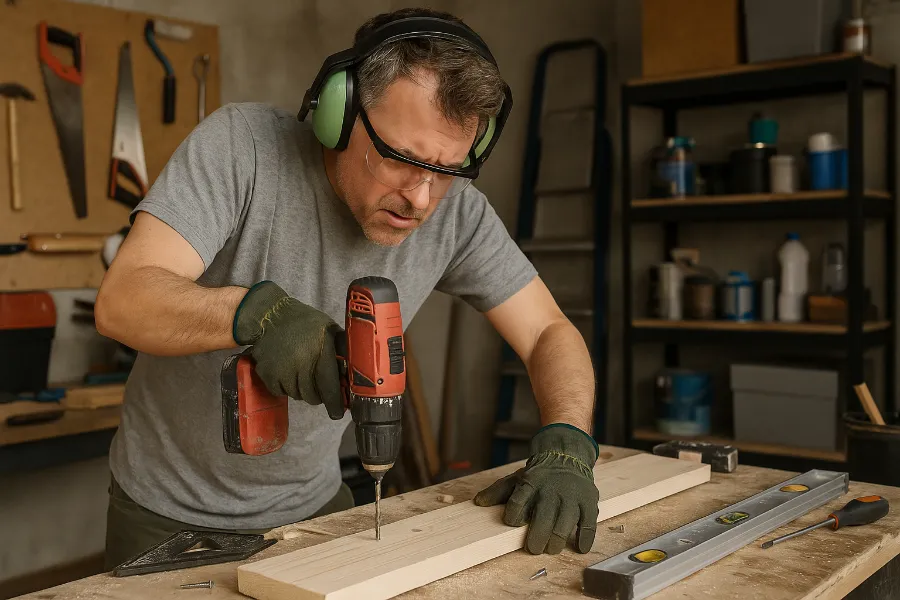
Ignoring Safety Gear
When beginners are excited, they tend to skip safety steps. “It’s just one quick cut,” or “I won’t get dust in my eyes,” or “I don’t need gloves for this” all sound reasonable until something goes wrong. Garages are full of hazards: dust, metal fragments, splinters, chemicals, heavy objects, and slippery surfaces. Even a moment of carelessness can cause injuries. Eye protection, gloves, a dust mask, and ear protection might feel like annoyances, but they exist for a reason. The U.S. Environmental Protection Agency (EPA) emphasizes how indoor workspaces including garages can accumulate airborne particles and chemical fumes that affect both air quality and respiration. You can read more about general indoor air considerations in the EPA’s guidance on indoor environmental quality. Beginners often think safety equipment slows them down, but injuries slow you down much more.
Skipping Material Preparation
One of the biggest “invisible mistakes” is failing to prepare materials. Many beginners simply start cutting or mounting without sanding, cleaning, priming, acclimating, or otherwise prepping the material properly. But materialsespecially wood react to temperature and humidity. This concept ties into hygroscopy, which describes how materials absorb or release moisture depending on the environment. It’s a surprisingly advanced topic that many DIYers learn about only after something warps or swells unexpectedly. If your garage experiences major temperature swings or humidity changes, unprepared wood may expand, contract, twist, or warp. Paint may dry improperly. Glue may not bond. Metal may oxidize more quickly. Beginners often assume the material will behave normally, but the garage environment plays a big role in how well things turn out.
Working With Terrible Lighting
Garages are notorious for having bad lighting usually one dim bulb or a flickering fluorescent tube. Beginners don’t always realize how much bad lighting affects accuracy. Poor lighting hides imperfections, makes surfaces look level even when they aren’t, and causes shadows that throw off your perception. I’ve seen projects look perfect at night only to appear crooked, uneven, or sloppily finished once the sun hits them the next day. Adding LED work lights or clamp lights is one of the quickest ways to reduce beginner mistakes.
Overconfidence With Power Tools
Power tools are amazing, but beginners often underestimate how precise you need to be when using them. A drill can jerk suddenly. A circular saw can wander off the cut line. A jigsaw can splinter edges. A miter saw can bind if the material isn’t positioned correctly. A lot of mistakes come from forcing cuts too quickly, skipping clamps, or rushing because the tool “should be fast.” Power tools require controlled movement and consistency. In the garage where surfaces are uneven and space is tight this becomes even more important. Beginners often learn this the moment they make their first crooked cut or strip their first screw.
Misreading Studs, Walls, and Load Limits
Garages might look simple, but their walls can hide electrical wiring, pipes, doubled studs, insulation layers, and more. Beginners frequently assume they can mount heavy items anywhere, but that’s not the case. Hanging cabinets or overhead racks into drywall alone is one of the fastest ways to create a safety hazard.
Some garages have metal studs. Some have concrete walls that require masonry anchors. Studs may be spaced irregularly. Electrical lines often run horizontally about mid-wall height. Not knowing what’s behind the drywall is a recipe for accidents and repairs. Understanding wall structure is essential for load-bearing projects. It’s one of the harder lessons beginners learn, often after their first collapse or mis drilled hole.
Letting the Workspace Become Chaos
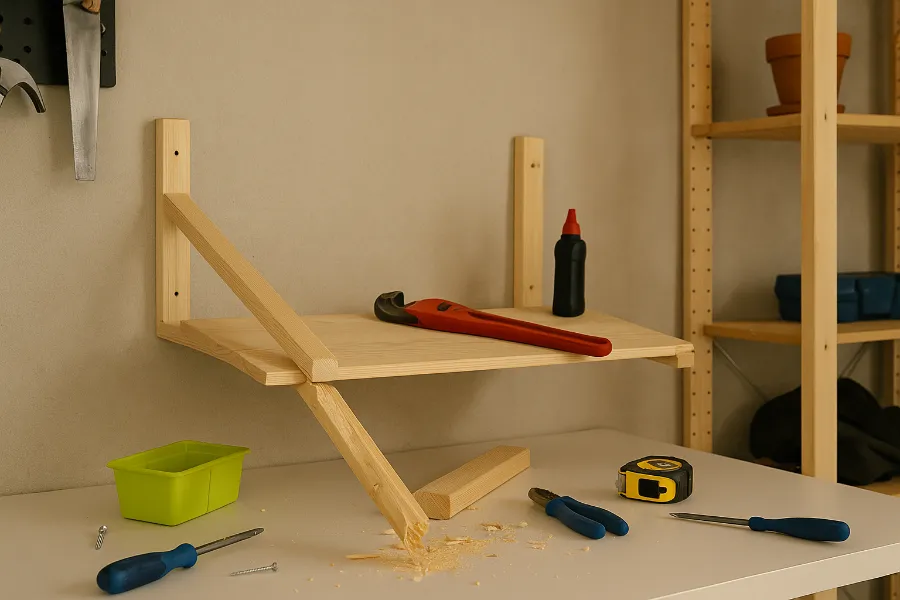
Clutter is one of the biggest productivity killers in garage DIY. Tools get scattered. Hardware rolls away. Sawdust covers everything. You lose drill bits under scrap materials. You spend more time hunting for the hex key you just had than working on the actual project. Most beginners underestimate how harmful a messy workspace can be. It leads to mistakes, accidents, lost materials, and tremendous frustration. Seasoned DIYers clean as they go not because they’re neat freaks, but because they know disorganization is the enemy of efficiency.
Buying the Wrong Materials or Incompatible Hardware
Choosing materials is an art beginners haven’t learned yet. At the store, everything looks useful and compatible but that’s rarely the case. Some plywood warps easily. Some screws are too soft. Some brackets are purely decorative and not load-bearing. Some boards aren’t straight. Some paints don’t adhere to certain materials. And some anchors simply don’t work with your garage walls. Beginners often shop based on price or appearance without checking specifications, load ratings, or material compatibility. That’s how mistakes happen before the project even starts.
Ignoring Temperature and Humidity
Because the garage isn’t climate-controlled, materials behave differently than they would indoors. Glue cures slower in the cold. Paint dries unevenly in humidity. Wood absorbs and releases moisture depending on the season. Metal tools sweat from condensation during temperature shifts. If you’ve ever wondered why a project looked great in spring but warped in summer, the garage climate is likely the culprit. Understanding environmental factors is a level of wisdom beginners gain only after something goes wrong.
Skipping Test Fits and Dry Assembly
Dry assembly is one of the most valuable steps in any project, but beginners often skip it because they’re eager to see progress. Test-fitting parts reveals alignment issues, incorrect measurements, spacing problems, and design flaws. Without this step, you end up discovering those problems only when everything is already screwed or glued together. Dry-fitting saves time, materials, and frustration. It’s the rehearsal before the performance and beginners usually don’t realize how important it is until they skip it once.
Overcomplicating Projects Because of Enthusiasm
Beginners often start a simple project and suddenly decide to upgrade it mid-process. A shelf becomes a wall-mounted system. A bench becomes a full workbench with drawers. A small organization project becomes a full garage remodel. Enthusiasm is good, but overcomplication leads to burnout, half-finished projects, and wasted resources. DIY is a skill acquired through repetition not giant leaps. Small wins matter more than ambitious failures.
Not Taking Breaks or Reset Moments
Sometimes a project goes wrong simply because you keep pushing through frustration. When a cut goes off, when a screw keeps stripping, when something doesn’t align those moments are signals to pause, breathe, step back, and reset your mind. Beginners often interpret these moments as personal failure, so they push harder, which only creates more errors. The most experienced DIYers know that stepping away for ten minutes can save an hour of rework.
Final Thoughts: The Garage Is a Teacher
Every mistake listed here is a learning opportunity. No one becomes skilled at DIY without making plenty of errors along the way. The garage is where you learn about tools, materials, patience, safety, and your own limitations. It’s a place where enthusiasm battles reality and where experience slowly grows.
If you take away anything from this article, let it be this:
Plan before you start.
Measure carefully.
Use the right tools.
Respect the workspace.
Pay attention to environmental conditions.
And above all learn from every mistake.
The garage might be messy and unpredictable, but it’s also the perfect training ground. Every project, no matter how flawed, teaches you something valuable.
FAQs
Garages are harder environments poor lighting, temperature swings, uneven floors, and clutter make mistakes more likely compared to controlled indoor spaces.
Starting without a solid plan is the top issue. Beginners often underestimate the steps, materials, and tools required until they’re already mid-project.
Even tiny measurement errors can cause shelves, cabinets, or mounts to sit unevenly, fail structurally, or require rework. Precision prevents wasted materials.
Worn-out drills, dull blades, and inaccurate levels create sloppy results and make simple tasks harder. Many “problems” beginners face come from bad tools.
Eye protection and gloves are the most commonly ignored. Many beginners underestimate how often dust, splinters, or metal debris can cause injury.
Materials like wood and adhesives react to environmental changes wood can warp, glue may not cure, and paint can dry unevenly in humidity or cold.
Mounting heavy items into drywall alone can cause shelves or racks to pull out, creating safety hazards. Studs or proper anchors are essential.
Yes. Practicing on scrap materials builds control and confidence, reducing crooked cuts, stripped screws, and unsafe handling.
Dim or uneven lighting hides flaws, distorts shadows, and makes it hard to see level surfaces. Extra lighting dramatically improves accuracy.
Stop, step back, and reset. Rushing through frustration leads to more mistakes. Taking a moment to reassess prevents bigger problems.


